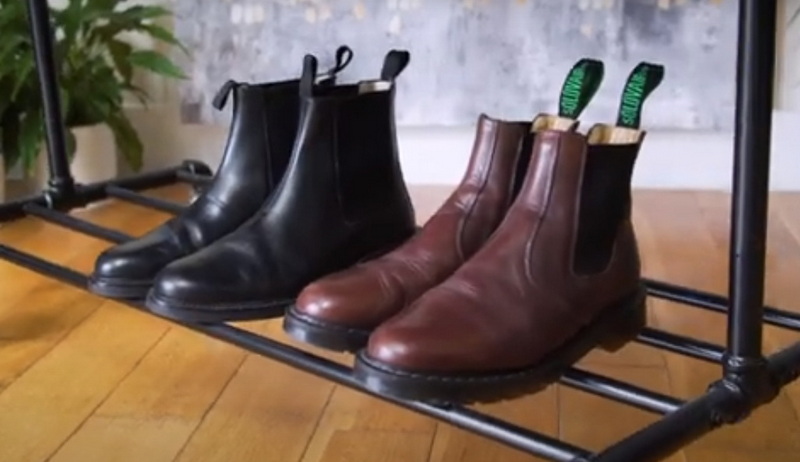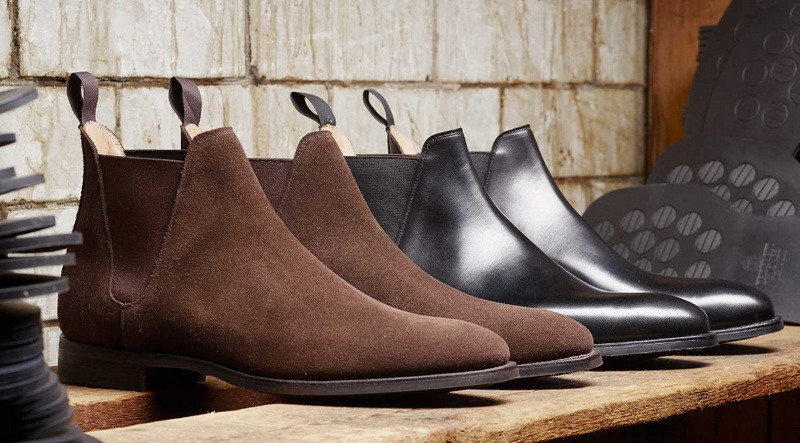Content Menu
● Introduction to Shoe Sizing
>> Men's vs. Women's Foot Anatomy
● Converting Men's to Women's Shoe Sizes
>> Conversion Chart
>> Brand-Specific Conversions
● Physiological Differences and Shoe Design
● International Shoe Size Conversions
>> Conversion Chart for International Sizes
● Importance of Proper Fit
>> Measuring Foot Size
>> Factors Affecting Fit
● Gender-Neutral Shoes
● Customization and Technology
● Impact of Incorrect Sizing
● Conclusion
● FAQ
>> 1. How do I convert men's shoe sizes to women's?
>> 2. Why are women's shoes narrower than men's?
>> 3. Do all brands use the same conversion system?
>> 4. How does the Q-angle affect shoe design?
>> 5. Can I use international size charts for conversions?
● Citations:
The question of whether women's shoes are two sizes bigger than men's is a common query, often leading to confusion due to the different sizing systems used for men's and women's footwear. In this article, we will delve into the differences between men's and women's shoe sizes, explore how to convert between them, and discuss the physiological and design factors that contribute to these differences.

Introduction to Shoe Sizing
Shoe sizing varies significantly between men and women, reflecting differences in foot anatomy and shoe design. Generally, women's shoe sizes are about 1.5 to 2 sizes larger than men's for the same foot length, but this conversion is not always straightforward due to variations in width and brand-specific sizing.
Men's vs. Women's Foot Anatomy
Men and women have distinct foot anatomies that influence shoe design and sizing:
- Foot Length and Width: On average, men have longer and wider feet than women. For instance, a typical 5'9" man has feet about 10.75 inches long, while a woman of the same height has feet about 10.18 inches long.
- Heel and Forefoot Width: Women tend to have narrower heels but wider forefeet compared to men. This difference affects the overall fit and comfort of shoes.
- Q-Angle: The Q-angle, formed by the quadriceps muscle and patellar tendon, is wider in women due to their generally wider hips. This affects how the foot strikes the ground and requires additional support in performance shoes.
Converting Men's to Women's Shoe Sizes
Converting men's shoe sizes to women's involves adding approximately 1.5 to 2 sizes. However, this conversion can vary depending on the brand and specific shoe model.
Conversion Chart
Here is a basic conversion chart for U.S. sizes:
| Men's Size | Women's Size |
| 6 | 7.5 to 8 |
| 7 | 8.5 to 9 |
| 8 | 9.5 to 10 |
| 9 | 10.5 to 11 |
For example, if you wear a men's size 8, you would likely fit into a women's size 9.5 to 10.
Brand-Specific Conversions
Some brands, like adidas, may have different conversion systems compared to other brands like Nike or New Balance. It's essential to check the specific brand's sizing chart for accurate conversions.

Physiological Differences and Shoe Design
The design of men's and women's shoes reflects physiological differences:
- Material and Weight: Men's shoes often require denser cushioning to support heavier body weights, making them heavier than women's shoes.
- Support Features: Women's performance shoes may include additional forefoot support to compensate for the wider Q-angle and prevent injuries.
International Shoe Size Conversions
Shoe sizes vary across different countries and regions. Here's a brief overview of international conversions:
- U.S. to U.K.: Women's U.S. size 8.5 corresponds to a U.K. size 6.
- U.S. to EU: Women's U.S. size 8.5 corresponds to an EU size 39.
Conversion Chart for International Sizes
| U.S. Size | U.K. Size | EU Size |
| 8.5 | 6 | 39 |
| 9 | 6.5 | 40 |
| 9.5 | 7 | 41 |
For international conversions, it's crucial to use a comprehensive size chart that accounts for regional differences.
Importance of Proper Fit
Properly fitting shoes are essential for comfort and preventing foot issues. Incorrectly sized shoes can lead to discomfort, pain, and even injuries. A study found that wearing incorrectly sized shoes was associated with ankle pain in women and was more prevalent among men[6].
Measuring Foot Size
To ensure a proper fit, measuring your foot size accurately is crucial. You can do this at home using a ruler or visit a shoe store for a precise measurement using a Brannock device[2]. It's important to measure both feet, as they may differ in size, and to fit the larger foot[5].
Factors Affecting Fit
- Width: Men's shoes typically have a wider fit, often in "D" width, while women's shoes are narrower, usually in "B" width[7].
- Depth: Shoes should be deep enough to accommodate the toes comfortably, especially for individuals with conditions like hammertoes[5].
- Arch Support: High arched feet require shoes with more depth and adjustability through the instep to prevent discomfort[3].
Gender-Neutral Shoes
Some brands offer gender-neutral shoes, which are often designed based on men's sizing but marketed to both genders. However, these shoes may not always cater to women's narrower widths[4].
Customization and Technology
Advancements in shoe technology allow for more customization options, such as 3D printing and personalized insoles, which can help achieve a better fit regardless of gender-specific sizing.
Impact of Incorrect Sizing
Incorrectly sized shoes can lead to various issues, including foot pain, ankle pain, and even falls. It's crucial to prioritize proper fit to avoid these complications[6].
Conclusion
In conclusion, while women's shoes are generally about 1.5 to 2 sizes larger than men's for the same foot length, the conversion is not always straightforward due to differences in foot anatomy and shoe design. Understanding these differences and using brand-specific sizing charts can help ensure a comfortable and proper fit.

FAQ
1. How do I convert men's shoe sizes to women's?
To convert men's shoe sizes to women's, typically add 1.5 to 2 sizes. For example, a men's size 8 would be a women's size 9.5 to 10.
2. Why are women's shoes narrower than men's?
Women's shoes are generally narrower because women tend to have narrower heels but wider forefeet compared to men. This requires a different fit to ensure comfort and support.
3. Do all brands use the same conversion system?
No, different brands may have their own conversion systems. For instance, adidas might have a different system compared to Nike or New Balance.
4. How does the Q-angle affect shoe design?
The Q-angle, which is wider in women, affects how the foot strikes the ground. This requires additional support in the forefoot area of women's performance shoes to prevent injuries.
5. Can I use international size charts for conversions?
Yes, international size charts can be used for conversions, but it's important to consider regional differences. For example, U.S. size 8.5 corresponds to U.K. size 6 and EU size 39.
Citations:
[1] https://www.footankleinstitute.com/blog/mens-and-womens-shoe-sizes-difference/
[2] https://www.nordstrom.com/browse/content/blog/how-to-measure-shoe-size
[3] https://aalignment.com/the-right-fit-a-guide-to-proper-fitting-footwear/
[4] https://www.reddit.com/r/RunningShoeGeeks/comments/10b8tfc/is_width_the_only_difference_between_then_mens/
[5] https://canadianfootwear.com/size-fit-guide/
[6] https://pubmed.ncbi.nlm.nih.gov/20543221/
[7] https://runrepeat.com/guides/differences-mens-womens-running-shoes
[8] https://www.clarks.com/en-us/blog/editorial/how-to-tell-if-your-shoes-are-the-right-size
[9] https://pmc.ncbi.nlm.nih.gov/articles/PMC9074857/
[10] https://www.roadrunnersports.com/blog/women-to-men-shoe-size
[11] https://www.nike.com/a/how-to-measure-foot-size
[12] https://hersco.com/education-center/shoe-size/
[13] https://support.newbalance.com/s/article/NBUS-How-to-Convert-Your-Women-s-Shoe-Size-to-a-Men-s-Shoe-Size
[14] https://colehaan.hk/pages/size-chart
[15] https://bootworld.com/blogs/advantage/the-difference-between-mens-and-womens-work-shoes
[16] https://runrepeat.com/size-charts/on
[17] https://flowfeet.com/content/15-mens-womens-us-shoe-size-conversion-calculator
[18] https://www.adidas.com/us/blog/968383-how-to-measure-shoe-size
[19] https://mallet.com/blogs/news/are-mens-shoe-sizes-the-same-as-womens
[20] https://www.newbalance.com/size-guide.html

















